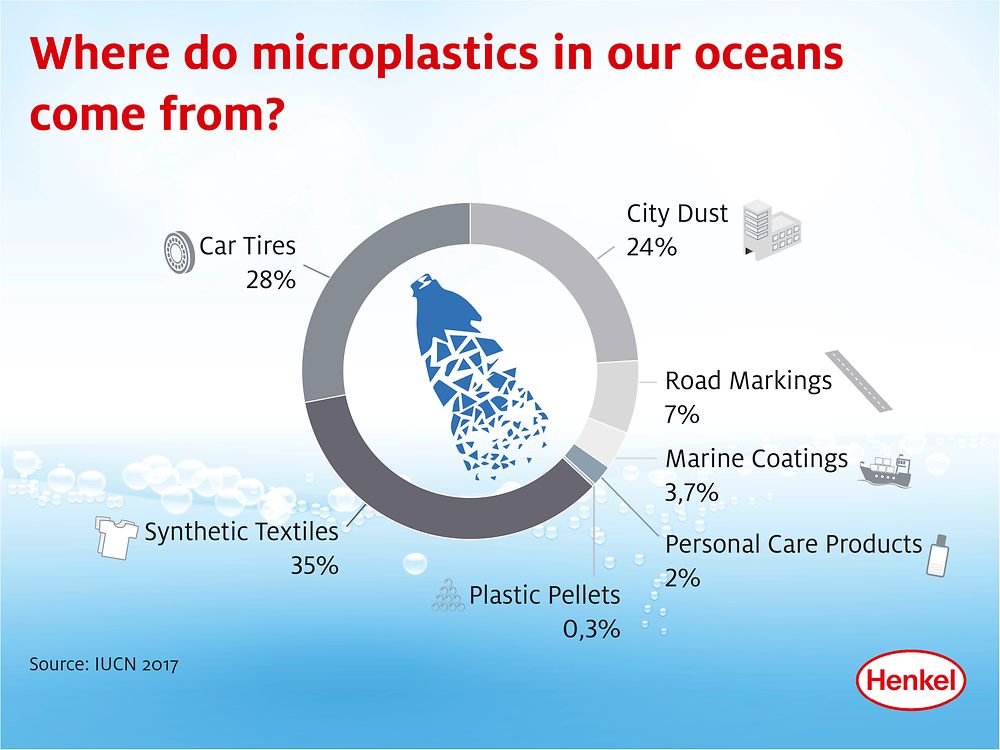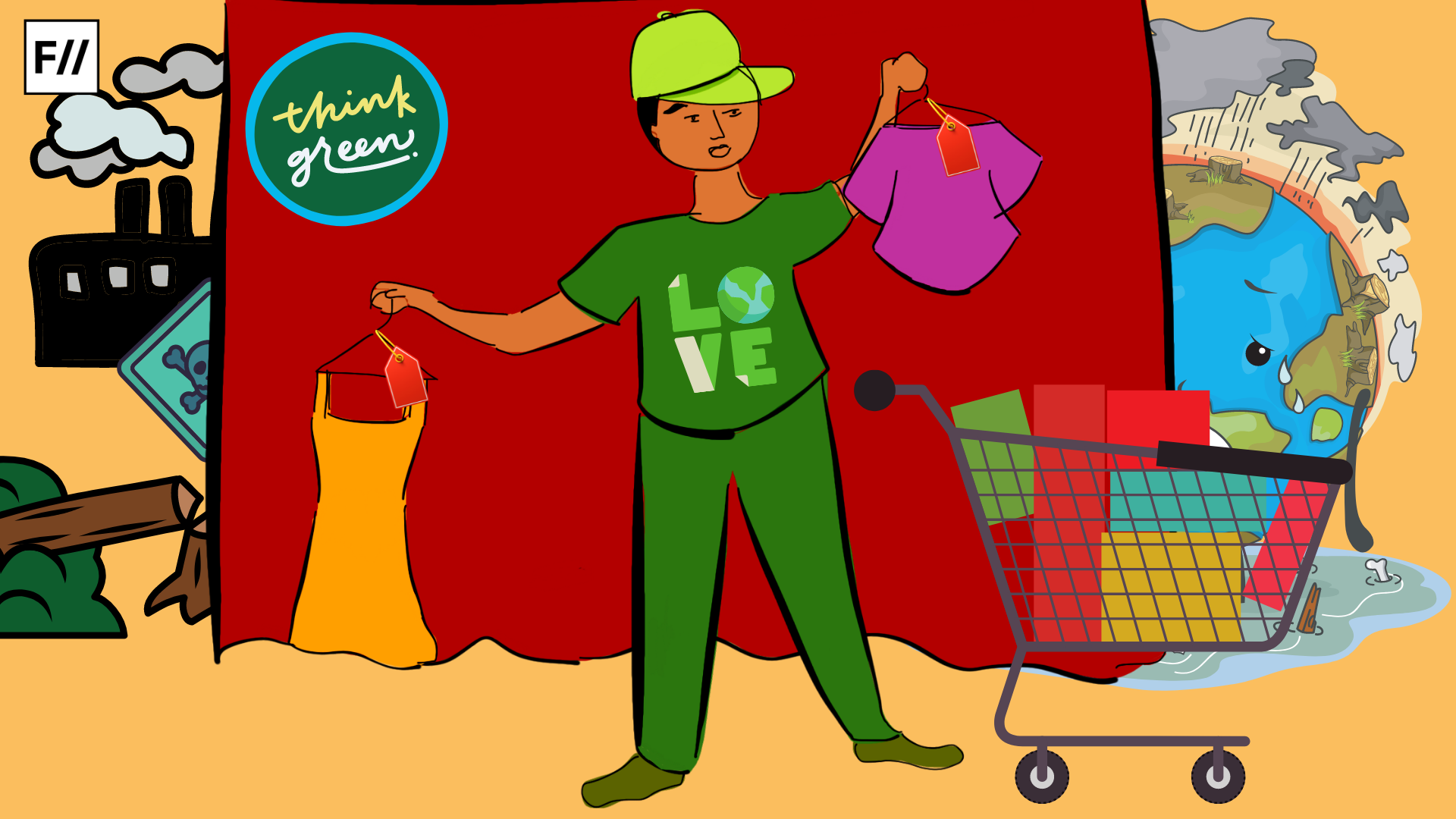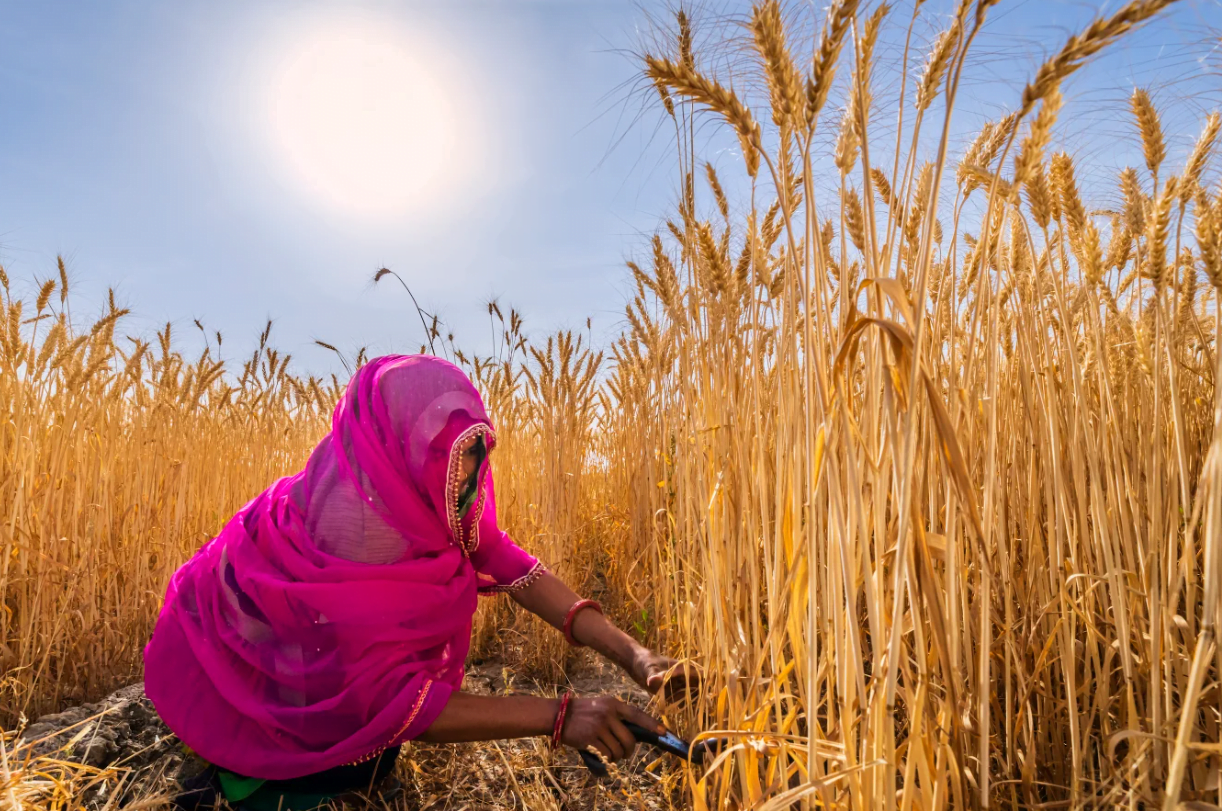Editor’s Note: FII’s #MoodOfTheMonth for July 2021 is Sustainability. We invite submissions on the diverse aspects of sustainability throughout the month. If you’d like to contribute, kindly email your articles to sukanya@feminisminindia.com
‘Our products are eco-friendly and biodegradable’, You’d have read this line on various websites and marketing materials. Marketing products as eco-friendly and biodegradable is the new cool and caters to the target audience’s new found conscience for the environment. These tactics are called greenwashing, a strategy where a company markets itself as environmentally conscious but makes little to no effort to actually make their products eco-friendly or reduce their carbon footprint.
These marketing strategies are aimed at misleading consumers who prefer to buy goods and services from eco-friendly organizations. One of the biggest issues with green marketing for fast moving consumer products is that terms like eco-friendly, biodegradable, sustainable, compostable, organic are very loosely used. They are also loosely understood and interpreted and work best for the company creating these products, explains ecologist Shradha Shreejay.
For example, in the feminine hygiene products sector menstrual pads and products are marketed as biodegradable but they don’t tell you that to degrade, the pads need to be put under very specific conditions and composted in industrial composters. A common household or municipality does not have the infrastructure to compost such pads. Hence, it gives consumers a false sense of hope that they are doing something for the environment, when the pads are just going to the landfill. The consumers are also paying more for these pads and this can be considered a form of duping. “It is the producers’ responsibility to give correct information and the government must also introduce regulations making it mandatory for companies to give more information about the products. You cannot cheat the consumers,” adds Mayuri Bhattarcharjee, climate reality leader.
The consumers have a right to know and ask, but they must also be aware of what actually eco-friendly or being sustainable means. Rajasi Kulkarni, menstrual health activist, adds that not disclosing the ingredients or content of a product is a form of greenwashing. Most of the time consumers are not aware of what their ‘eco-friendly’ products are made of and buy by just seeing the green label. It is important for us to ask questions of the manufacturers, i.e. how was it created, how to take care of it, how to dispose of it, how much time will it take to compost or biodegrade among others.
Consumers can also verify products before buying, they can look at third-party certifications or source more locally as there is more easy access to product information and more likely there would be less preservatives, less fuel that might have gone into transportation and less storage would be required, hence an optimal usage of resources. “When one shops local, it goes without saying that one is boosting the local economy and supporting small businesses,” says Sonal Jain founder of Sustainable Living & Learning Community, Chennai and co-founder of Boondh.co
Microplastics in our clothes
When we think of plastic we mostly think of plastic bags, bottles, plastic packaging etc, however our clothes also have microplastics. Plastics like polyester, nylon, acrylic, and other synthetic fibers now constitute about 60 percent of the material that makes up our clothes worldwide. Because plastic fibers are cheap and versatile, providing for stretch and breathability in athleisure, and warmth and sturdiness in winter wear, there is a high demand for them. According to industry journal Textile World, demand for polyester has grown faster than demand for wool, cotton and other fibers for at least 20 years and, by 2030 synthetics are expected to account for 75 percent of global apparel fiber production, or 107 million tons.

A study released in 2016 found out that washing clothes is one of the biggest sources of microplastics in the environment. During laundry, such clothes leave traces of microplastics in the form of small threads into the water pipeline and eventually into our seas and oceans. This microplastic pollution is consumed by marine life and in turn us. Basically, we are wearing, eating and drinking plastic.
These clothes also tend to be cheaper and hence easily consumable. Today, fast fashion has created a never-ending cycle, where young people must tend to social media pressure and the latest fashion trends to keep up to date.
What can we do?
Small individual efforts can pave a long way in reducing plastic waste from our water bodies. We can start with washing synthetic clothes less frequently, for a shorter duration, and ensuring that our washing machine is full. Washing a full load results in less friction between the clothes and fewer fibers are released. You will also be saving lots of water and electricity!
Consider switching to a liquid laundry soap. Laundry powder “scrubs” and loosens more microfibers and use a colder wash setting. Higher temperature can damage clothes and release more fibers. Dry spin clothes at low revolutions. Higher revolutions increase the friction between the clothes. Also, consider using an old sock or a wash bag for the water outlet. The bag can capture many fibers released in the washing process.
Consumers can also choose to buy only natural fibres such as cotton, hemp, bamboo etc. Eco and organic fabric biodegrade naturally over time. In turn, you will also support local artisans and India’s rich handloom industry. Clothes made of natural fibres are more expensive, but last longer. Eventually, one must move to buying and consuming less if you really want to be sustainable.
This article was previously published here.
Featured Image: Ritika Banerjee for Feminism in India




